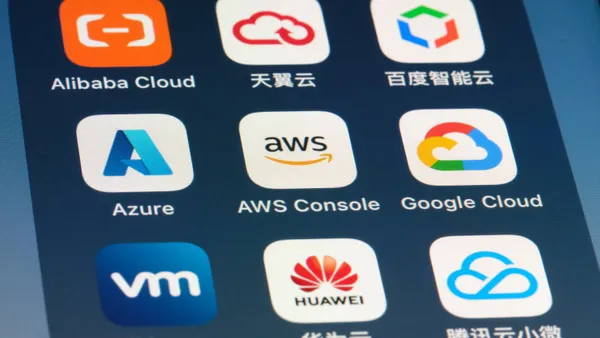The global telecommunications industry is going through a period of significant disruption and CIOs are on the front lines, tasked with delivering agility and innovation, so their companies can win the fight for customers and be first to 5G dominance.
Earlier this year, Nokia set out to understand more clearly what’s driving the current wave of change, as well as the strategies CIOs are using to respond to it. A look at more than 50 leading telco service providers around the world revealed three powerful "megatrends" common across the entire industry — in mature and emerging markets alike.
Megatrends with massive impact
The three megatrends represent a convergence of evolving technology, shifting market dynamics and business imperatives:
- Searching for growth: Service providers are finding it harder and harder to grow the top line, especially in regions where the internet and mobile markets are nearly saturated.
- Optimizing the traditional telco: New technologies are creating opportunities for service providers to make existing systems and operations more streamlined, efficient and cost-effective.
- Taking a new look at the industry: Incumbents are responding to disruptive players by looking at their services and infrastructure in a new light and shifting the competitive "battlefield" away from core telco offerings.
Service providers are testing out strategies to address these megatrends — with clear implications for CIOs. Three specific strategies are emerging that will be strongly affected by the leaders responsible for IT and operations: diversification, digitalization and customer experience innovation.
Diversification as a path to growth
One key strategy that service provider CIOs are being asked to implement for 5G is diversifying the business away from basic connectivity. This can take many forms, such as bundling subscriptions with third-party services like utilities, food delivery, banking or mobile payment platforms.
In such scenarios, it’s on the CIO to make their organization “ecosystem-ready” — to provide seamless, native support for services that will be connected to the telco’s own offerings. That requires establishing a unified front-end system for billing, bundling, assurance and other customer-facing processes. The CIO is the architect and owner of this system, which will ultimately make it simpler to manage and operate open ecosystems that facilitate diversification through organic growth, acquisitions, strategic partnerships and investments, and more.
To serve diversified portfolios, CIOs are also going to be responsible for rolling out advanced network infrastructure with agile capabilities, such as 5G network slicing, which assigns dedicated portions of the network to specific customers for specific services, applications or solutions. Software infrastructure will be a key facilitator of the push toward diversification in networking.
Becoming "digital service providers"
5G is driving the digital transformation of the telecommunications industry, and CIOs are at the forefront of implementing the software necessary for true digital agility. That agility takes many forms: supporting customer interactions through digital channels; improving the speed of those interactions while giving subscribers greater transparency and control over service usage through software defined networks; and in some cases, launching digital second brands to target specific markets or demographics. Given the scope and complexity involved, CIOs are under tremendous strain to ensure their digitalization programs succeed.
With digital second brands specifically, the organization's existing infrastructure often can't provide the agility required, so CIOs are building all-new platforms and backend systems to support those new brands. We've seen many operators launch a second brand built on a cloud-native IP architecture with minimal connections to older systems.
Turning the focus to the customer
Perhaps the most significant shift for telco service providers has to do with how services are created. It used to be the capabilities of the network determined what could be offered: a "network-out" approach. Today, partly driven by market demand and partly enabled by new technology, service providers are embracing a "customer-in" way of thinking: designing services based on what customers need.
Here again, CIOs are taking a leading role on several fronts, helping streamline by breaking down silos and looking holistically at the entire service lifecycle; for example, reducing the number of post-paid mobile plans to just one. CIOs are also implementing analytics to leverage the massive amounts of customer data being collected for use by teams in marketing and other departments.
The CIO as champion
As the network continues to converge with IT and operations, service provider CIOs will play an increasingly essential role in implementing all the above strategies — and contributing directly to the success of the business. The systems and processes they establish will be critical to enabling, marketing, selling, provisioning and operating new business models and delivering on new 5G use cases. It's a far more strategic role than the one CIOs filled in the past, requiring considerably more focus on innovation, disruption and experimentation to drive new business and establish an agile corporate culture that truly embraces change.









